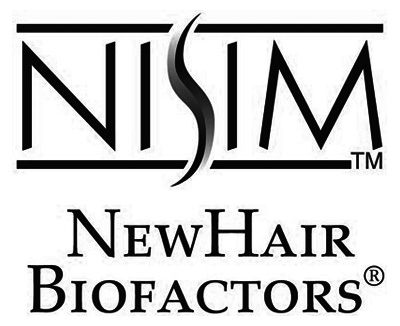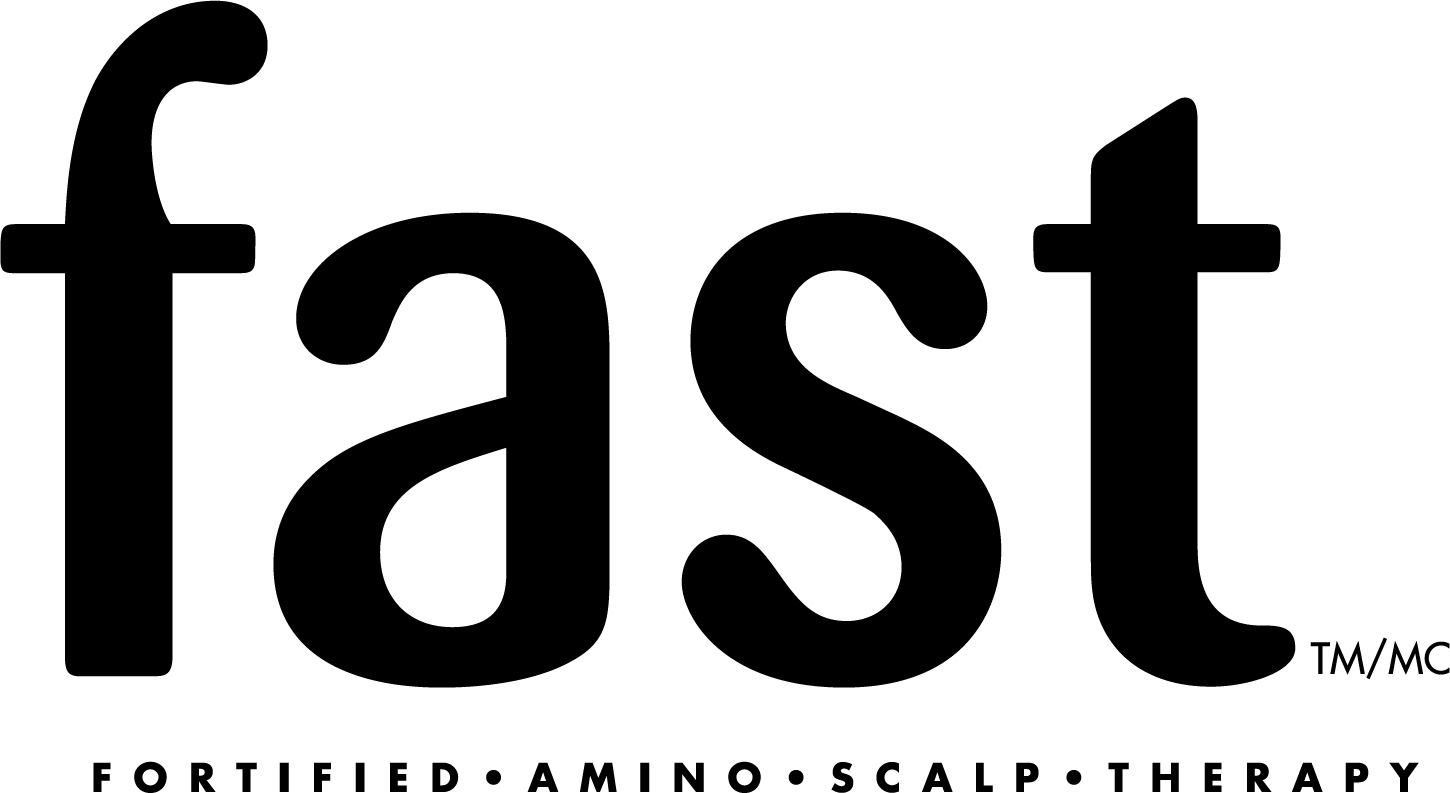Scalp Biopsy
Cellular Changes in Scalp Tissue Biopsies on Men with Androgenic Alopecia Treated with a Natural Organic Extract Solution: An Immunohistochemical Perspective
Larry E. Fremont, B. Sc. M.D., Alfred J. Farmilo, Ph D. , Michael. A. Stratis, R.T.
ABSTRACT
Histological analysis of seven patients with male pattern baldness (androgenic alopecia) were assessed before and after treatment with a natural organic extract solution. Initial scalp biopsy specimens were obtained from an area of the balding scalp greater than 2.5 em in diameter. Patients were provided with a scalp cleansing shampoo and the natural organic extract solution. They were instructed to cleanse the scalp daily and apply the extract at least twice daily. Fourteen weeks after the treatment the patients were re-biopsied from an area of the scalp adjacent to the initial biopsy and were evaluated. Five of the seven patients demonstrated histological changes consistent with a significant increase in hair follicles at the cellular level, of their post treatment biopsies. Decreased levels of surface and epidermal scalp layer dihydrotestosterone (DHT) were also observed in the post treated biopsies using immunoperoxidase techniques. The monoclonal antibody QB-END-10 (CD 34) was also used immunohistochemically and demonstrated reactivity on the cell surface membrane of a portion of cells associated with the inner root sheath of the hair follicles of the post treatment biopsies. The reactivity of the QB-END-lO antibody raises many questions that require further investigation. Its significance is yet unknown, however the possibility that the natural organic extract may act as an endothelial derived relaxing factor (EDRF) and/or a stem cell stimulator cannot be ruled out.
INTRODUCTION
Based on the results from the previous report detailing the efficacy of the natural organic extract solution, we undertook to analyze the microscopic and biochemical changes in scalp biopsies, of balding men before and after treatment with the same orgamc extract. Previous results from the study, concluded that the natural organic extract had a stimulatory effect on men with various degrees of androgenic alopecia. Over 80% of the 148 men in the study responded with hair count increases of 30% and up to 427% more hair than prior to their treatment'. It has generally been assumed that matrix cells, through their interactions with the dermal papilla, play an important role in the follicular growth and differentiation of the hair follicles. Another key aspect to the differentiation and development of the hair follicle is the interaction and possible involvement of pluripotent epithelial stem cells. Based on studies with hemopoietic and other simple epithelial stem cells, certain properties are associated with them 4,5,10
1. they are relatively undifferentiated.
2. they have a highly proliferative potential.
3. they are responsible for the maintenance and regeneration of new tissue.
4. they are slow cycling cells, minimizing possible DNA errors that may occur during replication.
5. they are located close to rapidly proliferating cells and are usually found in well protected and highly vascularized regions- 10, 11, 12.
From the studies of Cotsarelis et. al. they have identified an area in mouse hair follicles, found near the attachment site of the arrector pili muscle and below the opening of the sebaceous glands that may correspond to the location of follicular stem cells" 5,3.
Further studies by Wood et. el., have tried to demonstrate the role of calcyclin, a calcium binding protein that may also play an important role in the regulation of calcium levels that ultimately control the differentiation of skin epithelial cells16. The differentiation of hair from epithelial cells is a very complex, yet highly organized procedure, by analyzing the various factors recently discovered with past knowledge already in place we can gain further insights into hair regulation and regeneration.
The interaction between androgenic hormones like dihydrotestosterone (DHT), receptor sites and the scalp have been associated with hair loss in both men and women 1,9, 13. We know the action of testosterone, involves the reduction of the hormone itself to DHT by the reducing enzyme 5 alpha-reductase13,15. Several theories of anti-androgenic action have been postulated:
1. inhibit or block the production of S alpha-reductase enzyme from acting on testosterone or;
2. prevent binding of the DHT to its corresponding receptor sites by a competitive non androgenic compound13,15.
Recent advances in immunohistological techniques have improved the ability to visually localize specific antigens in tissues sections7. By using highly specific monoclonal and/or polyclonal antibodies against various antigens, we were able to isolate and demonstrate specific cells, hormones and/or cytoskeletal proteins in situ6,7. With all the theories in place we tried to determine the possible mode of action of the natural organic extract solution.
MATERIALS AND METHODS
A 4-Smm punch biopsy was removed and fixed in a solution of methanol/acetic acid. The methanol/acetic acid fixative was chosen due to its minimal effect on tissue antigens", The biopsies were processed and embedded with paraffin wax and subsequently cut on a microtome.
The participants were instructed on the thrice daily application of the natural organic extract and were re-biopsied 14-16 weeks later. The second biopsies were taken adjacent to the original biopsy site and were fixed and processed as the originals. The cut serial sections of the before and after biopsies were stained with an Hennatoxycin and Eosin (H&E) stain. Subsequent sections were stained immunohistochemically with vanous polyclonal and monoclonal antibodies. The antibodies used in this study were anti-actin clone HHF3S, from (Biogenex; San Ramon, CA) anti-DHT, (Sigma Immunochemicals; St. Louis, MO) and QBEND- lO from (Novocastro, Newcastle upon Tyne, UK).
RESULTS
The scalp biopsied from the seven men taken before their treatment showed none to one or two atrophic hair follicles (see Figure 1). Staining with anti-DHT demonstrated large amounts of DHT in the epithelial region covering the scalp and in surrounding vessels and connective tissue (see Figure 3). The section stained with anti-actin and monoclonal QB-END- 10 were unremarkable in their features.
The biopsies after treatment demonstrated some significant features. Five of the seven men had an overall average increase of 4.0 more hair follicles in their post-treatment biopsies over their initial pre-treatment biopsies (see Figure 2), which had average hair follicles per biopsy of less than one (see Table 1). The sections stained with anti-DHT also showed significant decreases of DHT levels on the scalp and in the dermis of the epithelial cells (see Figure 4). Subsequent sections stained with actin and QB-END-lO also showed more remarkable changes. The anti-actin demonstrated larger areas of muscle bands as associated with the erector pili muscle. The QB-END-IO monoclonal antibody is also known as the Cluster Designation 34 (CD34) antibody. In the CD nomenclature, CD34, defines the antigen associated with human progenitor stem cells. The QB-END-IO is specific against endothelial cell membranes and haemopoietic stem cells. In our study we found it stained the vascular cells very intensely. We also noted that on post-treatment biopsies, where there was significant hair follicle increases, a portion of the hair follicles revealed intense cell membrane immunostaining with the QB-END-IO antibody, on the mid-portion of the hair follicle in an area of cells associated with inner root sheath of the hair follicles (see Figure 5).
DISCUSSION
Of the seven men used in this study, five had significant hair follicle increases after treatment with the natural organic extract solution. However, based on the immunohistology we are still not entirely sure on the mode of action. We note an overall decrease of the DHT levels on the scalp of all the participants. The solution which contains various emulsified organic compounds may act as natural anti-androgen, thus neutralizing and/or eliminating DHT at the cellular level.
The stimulation of the hair follicles may be linked with the re-activation of the stem cells. This theory along with the actual demonstration of QB-END-lO positive cells staining the mid to upper portion of the inner root sheath, may actually place theory of pluripotent stem cells along the root sheath of hair follicles, as postulated be Chase' in 1954.
Another possible mechanism for the mode of action may be linked with endothelium derived relaxing factor (EDRF), an endogenous compound probably accounting for the action of vasodilation, similar to the minoxidil compound'. The link may arise with QB-END-IO antibody specificity staining endothelial cells in conjunction with pluripotent stem cell activation4, 14,17.
Further studies on the natural organic extract will be carried out to effectively proof the anti-androgenic action. With the production of affinity purified sepharose gel columns and DHT receptors purified from prostate tissue closer evaluation of the compounds action may be determined. Cultured dermal papilla cells can also be experimented with, to demonstrate any in-vitro effects of hair follicle and stem cell activation with the raw ingredients of the organic extract.











-321430.png)
-321427.png)